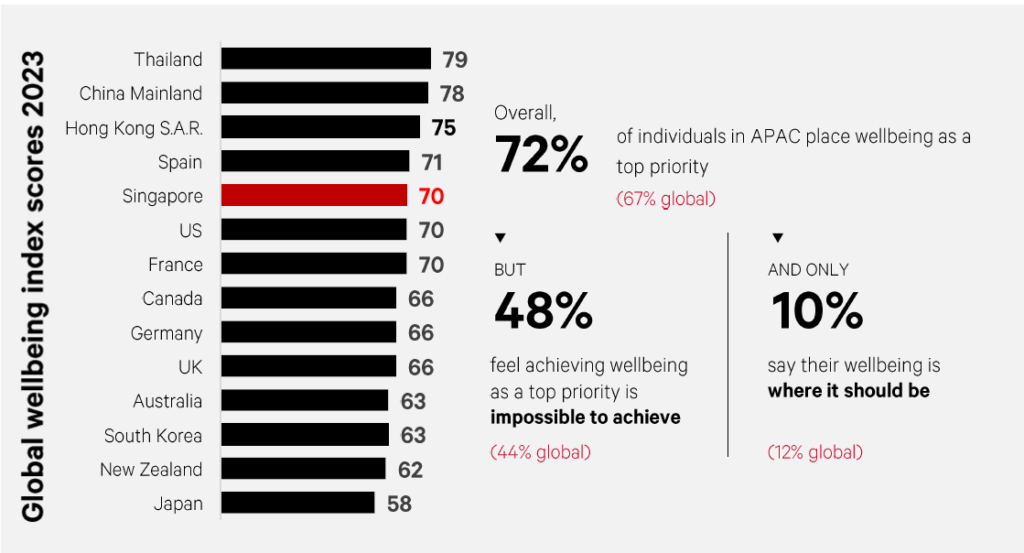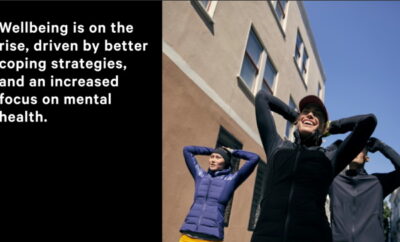
Health x Wellness
lululemon’s Global Wellbeing Report Reveals the “Wellbeing Dilemma”
The “Wellbeing Dilemma”: Where people prioritise wellbeing but are not seeing an improvement in wellbeing.
lululemon released its third annual Global Wellbeing Report (GWR) which reveals the worldwide state of wellbeing has not improved since the company first surveyed in 2021.
40 percent of respondents in Singapore said wellbeing is lower than it has ever been before.
Although more than 72 percent of people ranked their wellbeing as a top priority, 48 percent said they thought achieving wellbeing as a top priority was impossible.
Enter the “Wellbeing Dilemma”.

In Singapore, there are certain groups that are feeling the impact of low wellbeing more acutely, creating a ripple effect of impact to both the individual and society. According to the GWR:
People are feeling that barriers to wellbeing are harder to overcome:
- 36 percent of people in Singapore do not have the time to think about their wellbeing.
- 45 percent feel the need to pretend to be happy even when not because of societal pressures.
Men and Gen Zs are feeling the impact of low wellbeing more acutely.
- Men face challenges speaking up about and/or improving their mental health with more than 1 in 2 individuals identifying as men in Singapore wising they would not be judged for showing an interest in improving their mental wellbeing.
- Nearly half of individuals identifying as men feel societal expectations for men in Singapore make it difficult for them to express their emotions.
- 50 percent of the surveyed men within Singapore feel that society has made it more difficult for them to speak up about their mental health than women.
Gen Zs in Singapore feel the effect of social media on wellbeing
- 2 in 5 Gen Zs in Singapore reported that social media negatively impacts their mental wellbeing.
lululemon believes wellbeing is a personal journey, rather than a destination. While ‘wellbeing’ is recognized as a life priority, the concept along with its barriers have become increasingly overwhelming. The heightened expectations around what ‘wellbeing’ should [be] have led to a downward spiral triggering further anxieties and stress.
Gareth Pope, Senior Vice President, lululemon, Asia Pacific
The GWR shares steps everyone can take to improve their wellbeing, learning from those with higher wellbeing:
- Workout / exercise with other people when possible. Those with high wellbeing are 4X more likely than those with low wellbeing to have joined free community-based workouts.
- Work to express your needs, especially with loved ones. 72% of those with higher wellbeing are more vocal about their needs in friendships, relationships and with family.

Images credit to lululemon.









